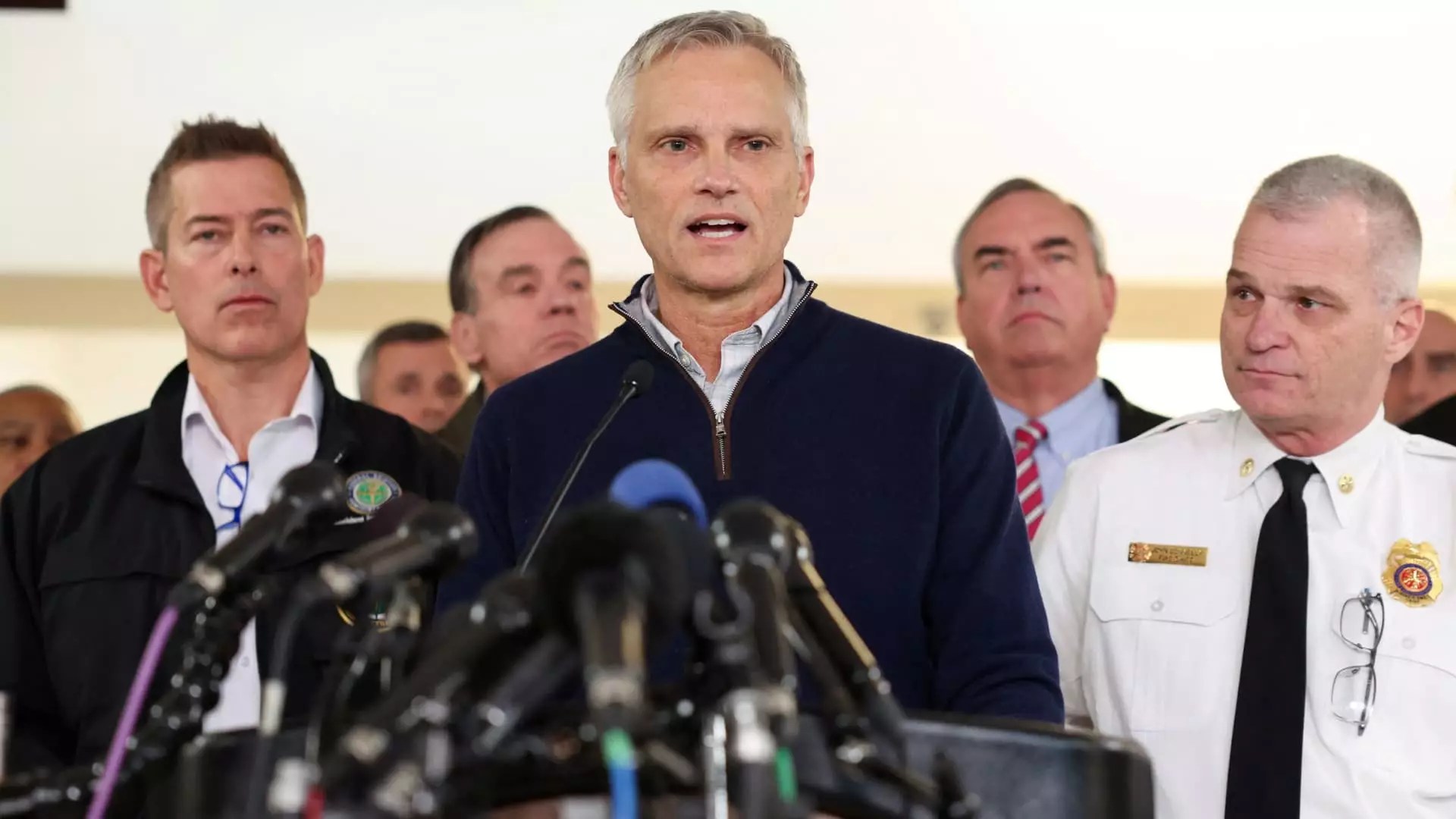On a fateful evening, the skies near Ronald Reagan Washington National Airport became the setting for an unthinkable tragedy as an American Eagle regional jet collided with a military Black Hawk helicopter. The incident, which took place around 9 p.m., has left the aviation community in shock. Initial assessments from American Airlines CEO Robert Isom indicate that the regional jet was operating on a standard flight path prior to the collision. However, this stark reality does little to alleviate the gravity of the situation as officials prepare for the worst – no survivors are expected.
The collision raises significant questions regarding flight path regulations and airspace safety, particularly in heavily trafficked areas such as the D.C. airspace. Transportation Secretary Sean Duffy remarked that while collisions are not common, both the military and commercial aircraft were operating within typical parameters. This assertion highlights a critical point: how frequently do safety protocols need reassessment amid evolving airspace dynamics? The standard operating procedures seem insufficient in preventing a tragedy of this nature, and it begs a reevaluation of communication channels between military and commercial aviation sectors.
As the recovery efforts ramp up, Isom expressed deep condolences for the victims, underscoring the human aspect of this disaster. The aircraft carried 64 individuals, including prominent athletes and their families, returning from a training session. The heartbreak felt extends far beyond the immediate loss; it touches the lives of countless others connected to those on board. The emotional toll on the families and the broader community cannot be overstated, and it is imperative for American Airlines to provide the necessary support in these challenging times. The airline’s activation of a care team is a commendable step, exemplifying corporate responsibility in the face of tragedy.
In the wake of the crash, authorities at multiple levels, including the National Transportation Safety Board, have embarked on a comprehensive investigation. Their findings will be crucial in determining the root causes of this disaster and may lead to critical changes in operational protocols to enhance safety measures. Isom emphasized that American Airlines is cooperating fully with the investigation, and it is crucial for the airline to follow through transparently. How the company handles this incident will not only influence its reputation but also the industry’s approach to safety moving forward.
As recovery efforts continue, the need for clear and consistent communication cannot be understated. Isom’s statement imploring the public to reach out for updates signifies a proactive approach to crisis management. However, the onus is on American Airlines and applicable authorities to ensure that they provide timely and accurate information. This tragedy must serve as a wake-up call for improved safeguards in aviation, especially where military and civilian interests intersect, ensuring that no future incident echoes the somber notes of this dark chapter in aviation history. The collective responsibility now lies in learning from this grievous event and preventing recurrence through stringent evaluations and adjustments in airspace safety protocols.


Leave a Reply